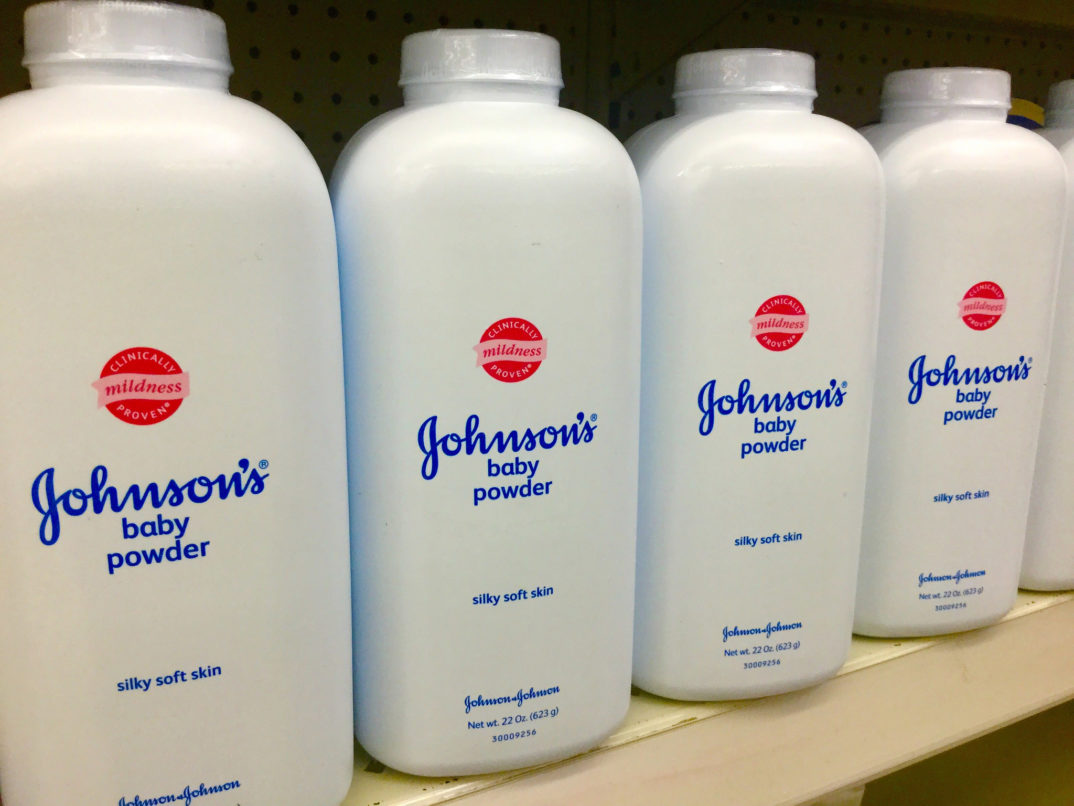The Reasoning Behind the $417 Million Baby Powder Lawsuit
Last month, according to the Los Angeles Times, a court ordered Johnson & Johnson, purveyor of several household health and beauty products, to pay $417 million in damages to Eva Echeverria, a 63-year-old Los Angeles resident who claims the company failed to warn her and other consumers about the cancer risk of their talc-based products, such as their baby powder.
Baby powder is popularly used by men and women alike to absorb perineal moisture. Some research has suggested, but not proven conclusively, that long-term use by women leads to, or contributes to the development of, ovarian cancer. Echeverria, who used Johnson & Johnson’s talc-based baby powder since she was 11, was diagnosed in 2007 with terminal ovarian cancer and claims she would have stopped applying it had she known of talc’s possible link to ovarian cancer. The California court found Johnson & Johnson liable for not letting Echeverria know of the possible link.
The Echeverria case was one of over 300 lawsuits pending in the state of California, and one of more than 4,500 lawsuits around the country. It was the latest, and largest, in a string of wins for plaintiffs against the manufacturing giant.
These decisions draw controversy because scientific research into the possible link between talc use and ovarian cancer has generated conflicting, if not ambiguous, results. How can Johnson & Johnson be held liable for the suffering of cancer patients if it’s unknown whether applying their baby powder contributes to the development of ovarian cancer? What’s the rationale behind these decisions?
Tort law is organized around the idea that every citizen is subject to a duty not to harm other citizens, and that a citizen who breaches that duty should make the injured whole again. Sometimes, the duty is not to harm others, period; sometimes it’s not to harm others carelessly. To breach the latter duty is to be negligent. In other words, I harm you negligently when I harm you by failing to exercise the care any reasonable person would exercise under the same or similar circumstances.
Companies who design, manufacture, or sell products — or who do all three — are subject to duties not to harm and may be held liable for harm if they fail to exercise reasonable care in designing, manufacturing, or selling their product.
In the Echeverria case, the negligence in question was the failure of a company to warn consumers of a possible risk posed by consuming its product. Johnson & Johnson, according to Echeverria, breached its duty not to harm her (and others) by failing to care enough to warn consumers about the cancer risk of its talc-based baby powder.
Because the punishment and opprobrium for criminality is so severe, criminal cases are marked by a high burden of proof: the prosecution must prove its case “beyond a reasonable doubt.” (Whether or why criminal punishment and opprobrium should be so severe is a controversial philosophical issue.) In a civil case like Echeverria’s, by contrast, the goal is simply to make the injured whole again, so the consequences of being found liable are milder and the burden of proof lower. The prosecution must prove its case only by a “preponderance of the evidence.” This means Echeverria had to show only that it was more likely than not that Johnson & Johnson was negligent: if the evidence from both sides weighed the same, all it would take to find for the plaintiff is a feather’s-worth more evidence in her favor.
This doesn’t mean the win was a foregone conclusion. According to the California Civil Jury Instructions, Echeverria had to prove seven different claims in order to demonstrate Johnson & Johnson’s negligence. The most contentious of these claims seem to have been that Johnson & Johnson knew or reasonably should have known their talc-based baby powder poses a risk, and that Johnson & Johnson’s failure to warn of these risks was a “substantial factor” in causing Echeverria harm.
As indicated above, these two claims are thought contentious because the evidence that the development of cancer is owed to long-term use of talc-based baby powder is inconclusive. Retrospective studies, which rely on cancer sufferers to recall their baby powder use, tend to support the link, while prospective studies, which pick subjects first and follow them through the years, tend to undermine the link. One columnist at the Los Angeles Times goes so far as to suggest that the accumulating lawsuits brought against Johnson & Johnson are based on “junk science.”
The dispute about whether the evidence is conclusive one way or another has a point only if it’s assumed that conclusive evidence is needed to decide the two claims. This is a natural-enough assumption: you might think Johnson & Johnson can’t be expected to know their product causes cancer unless their product actually causes cancer, and you might think they can’t be expected to warn against a danger that doesn’t exist.
But this assumption is debatable. We can warn against the risk of an inevitable event, or we can warn against the risk of a possible event. A road sign that warns drivers of a sharp curve ahead is an example of the former; a road sign that warns drivers of possible falling rock ahead is an example of the latter. It’s worth warning drivers of the curve, which is known to exist, because the curve introduces risk. But it’s also worth warning drivers of the possibility of falling rock because, even though we don’t know whether rocks have fallen, there’s still a risk.
There are important dis-analogies, but warning consumers about the possible link between using talc and developing cancer can be seen as relevantly like warning drivers about the possibility of falling rock. Just as drivers don’t need to know there are fallen rocks ahead to know there’s a risk, Johnson & Johnson doesn’t need to know conclusively there’s a talc-cancer link to know there’s a risk. And just as a failure to warn drivers about the possibility of falling rock can contribute to a driver’s injury if she is hurtling, unwarned, toward fallen rock, a failure to warn consumers about the possibility of developing cancer can contribute to a consumer’s injury if she continues using, unwarned, a product that might cause her to develop cancer.
It’s here that another of the seven necessary claims becomes significant. According to California civil law, a company may be held liable for carelessly failing to warn of risk only if reasonable companies under the same or similar circumstances would have issued a warning. Echeverria is the first plaintiff to have taken advantage of the law by bringing into evidence actual labels from other companies’ products that warn of talc’s possible link to cancer. Showing that reasonable, similarly situated companies include warnings on their talc-based products goes a long way toward showing that a courtroom debate about whether the evidence proves or doesn’t prove a talc-cancer link verges on irrelevance. The very fact that the science is inconclusive was enough to compel other companies to print a warning. In their eyes, profits just weren’t worth the risk of human lives (or, more cynically, of costly lawsuits).
The core question in negligence cases like Echeverria’s is: How would a reasonable person or company comport themselves in such circumstances? Contrary to what the Los Angeles Times reported, the jury did not conclude that the regular use of talc causes ovarian cancer. Rather, the jury compared the actions of Johnson & Johnson to what is considered reasonable behavior and, confronted with the evidence Echeverria brought, found it more likely than not that the company’s actions fell short of that standard. What the court concluded, in other words, is that a reasonable company would’ve given more consideration to the possibility — not the certainty — that its products introduce the risk of harm to the human beings who trust its goods.





